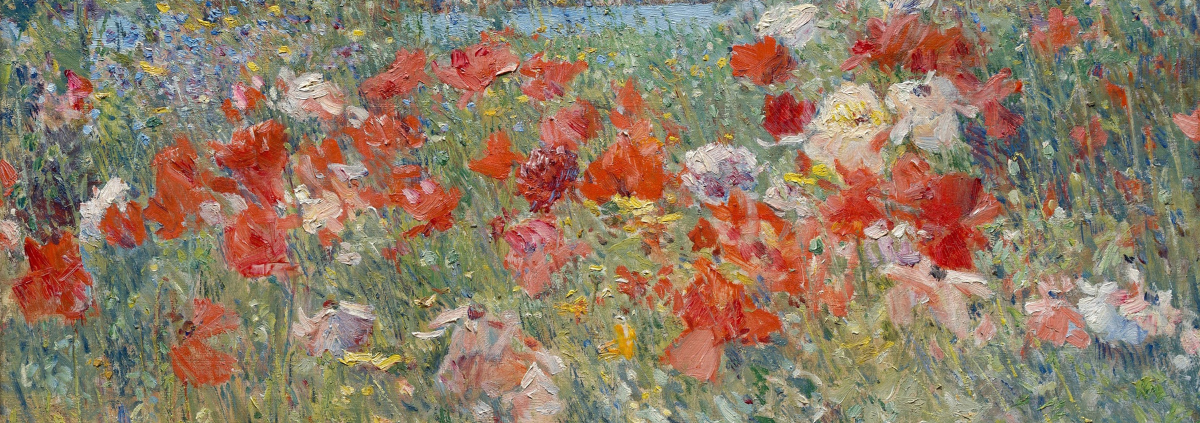Exploring Pastoral Themes from European Masters to Modern Works
As a fine art dealer at Victoria Fine Art, one of the most rewarding aspects of my profession is guiding collectors toward pieces that resonate both emotionally and as good investments. Among the many themes that have captivated art enthusiasts through the centuries, pastoral art, in my opinion, really does holds unique place. The genre typically celebrates the idyllic beauty of rural life and has evolved from its origins with European masters right through to modern interpretations, all the while maintaining its timeless appeal. So, if you’re looking to buy original art, pastoral-themed artwork is a good choice.
The Essence of Pastoral Art
Pastoral art typically captures scenes of the countryside, most often depicting an idealised view of rural life. Works often feature green rolling hills, flower filled meadows, and a generally harmonious interaction between humans and the natural world. Not only does this evoke feelings of a longing for simplicity and tranquillity, but it also serves as a contrast to the urbanisation and industrialisation of the modern world.
European Masters and the Pastoral Tradition
The roots of pastoral art can be traced back to the European Renaissance, where artists like Claude Lorrain and Nicolas Poussin elevated landscape painting to a high art form. Claude Lorrain (1600–1682), for example, is well known for his luminous landscapes that masterfully use of light and perspective. His paintings, such as The Embarkation of the Queen of Sheba, transport viewers to a golden age where humans and nature coexisted in perfect harmony. Nicolas Poussin’s (1594–1665) landscapes are rich with allegory and classical references. His structured compositions, like Et in Arcadia Ego, reflect a more intellectual approach to the pastoral theme.
For collectors interested in acquiring works inspired by these masters, there are numerous fine art paintings for sale online that echo their techniques and themes. Purchasing these pieces allows modern art lovers to connect with the rich heritage of European pastoral art.
Romanticism and the Pastoral Revival
The 18th and 19th centuries saw a renewed interest in pastoral themes, which can be attributed to the Romantic movement’s emphasis on emotion and nature. Artists like John Constable and J.M.W. Turner brought a British perspective to the genre, emphasising the picturesque.
John Constable (1776–1837), for example, is renowned for his depictions of the English countryside and his works, such as The Hay Wain, really celebrate the rustic charm of rural life. His paintings are ideal for those looking to buy original fine art paintings that capture the essence of pastoral beauty.
J.M.W. Turner (1775–1851) is well known for his landscapes, which are often more dramatic, and include pastoral elements that highlight the power and tranquillity of nature. In addition, his use of light and atmosphere set the stage for future innovations in landscape art.
Modern and Contemporary Interpretations of Pastoral Art
While the pastoral theme originated centuries ago, it still inspires modern and contemporary artists. Today’s artists have brought new perspectives and techniques to the genre and offer fresh interpretations that resonate with contemporary audiences.
David Hockney, for example, is one of the most influential modern artists. Hockney’s vibrant landscapes, such as those from his Yorkshire series, reimagine the pastoral genre with bold colours and abstract forms. His work appeals to those seeking art to buy that represents both tradition and innovation. Wolf Kahn, for example, blends realism and abstraction, with landscapes celebrated in his striking use of colour. His depictions of rural America reflect a modern pastoral sensibility, making his works highly sought after for collectors wanting to buy fine art online.
Building Your Pastoral Art Collection
For collectors looking for paintings to buy that evoke a sense of peace and nostalgia, pastoral themes are an excellent choice. Whether you’re drawn to the classical compositions of European masters or the bold reinterpretations of contemporary artists, the genre provides plenty of options to suit diverse tastes and budgets.
For those starting out on their collecting journey, consider starting with smaller, accessible works that align with your personal taste. As you gain confidence and expertise, you can expand your collection with significant pieces from renowned artists. Whether you’re exploring fine art for sale websites or visiting galleries, prioritise quality and authenticity.
For seasoned collectors, investing in rare works by European masters or innovative pieces by contemporary artists can add depth and value to your collection. Collaborating with an experienced fine art dealer such as Victoria Fine Art ensures that your acquisitions align with both your aesthetic preferences and investment objectives.
Pastoral Fine Art to Buy Online
As with any investment, it’s important to do your homework before purchasing fine art online. If you’re new to buying art or unsure about a piece of pastoral fine art, or if you have any further questions regarding the wide selection of original fine art to buy online at Victoria Fine Art, please don’t hesitate to get in touch. Feel free to complete this form, telephone +44 (0)1727 861669 or email info@victoria-fine-art.com for more information.





